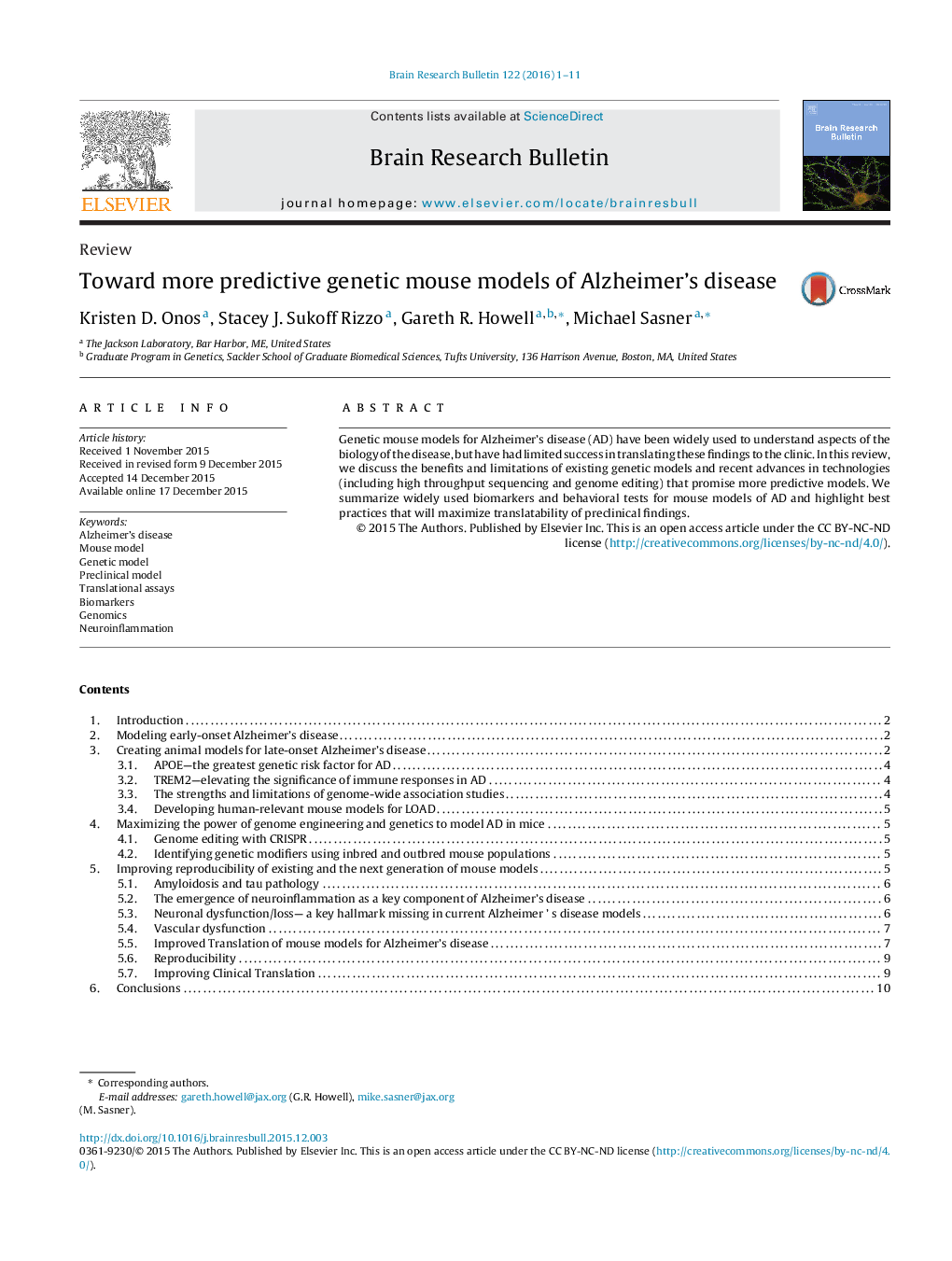| Article ID | Journal | Published Year | Pages | File Type |
|---|---|---|---|---|
| 6261662 | Brain Research Bulletin | 2016 | 11 Pages |
â¢Mouse models have improved our understanding of early-onset Alzheimer's disease.â¢The field lacks useful models of the more common late-onset Alzheimer's disease.â¢Genomic tools are giving us a better understanding of the genetics of AD.â¢Improved animal modeling techniques make models easier to make and characterize.â¢These new technologies should lead to more predictive models in the near future.
Genetic mouse models for Alzheimer's disease (AD) have been widely used to understand aspects of the biology of the disease, but have had limited success in translating these findings to the clinic. In this review, we discuss the benefits and limitations of existing genetic models and recent advances in technologies (including high throughput sequencing and genome editing) that promise more predictive models. We summarize widely used biomarkers and behavioral tests for mouse models of AD and highlight best practices that will maximize translatability of preclinical findings.
